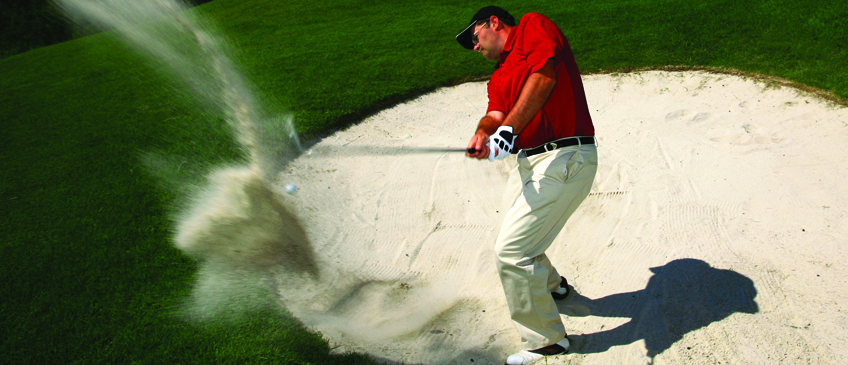Date: March 13, 2015
News - The Magic of the Right Bunker Sand

Finally the snow is melting and giving way to the first signs of spring. Avid golfers are itching to get out there and play again. It’s the perfect time to talk bit about the sand that is used for golf courses.
Ordering sand for a golf course is a lot more complex than simply picking up the phone, dialing 888-4-Chaney and ordering a couple truckloads of sand. Golf course superintendents have four different uses for sand throughout their course: bunkers, top dressing, root zone mixes, and fairway dressing.
Bunkers get the most talk and attention mainly because it directly relates to the players their golf game. The following factors are considered when selecting bunker sand: particle size, particle shape and penetrometer value, crusting potential, chemical reaction (pH) and hardness, infiltration rate, and color. All of these qualities ultimately must result in overall playing quality (so you don’t blame that chip onto the green which subsequently missed the hole on inadequate sand.)
You can however blame a missed putt on inadequately large sand particles. A significant amount of greenside bunker sand lands on the green when golfers chip their way out of the hazard. Sand particles that are greater than 2mm are considered gravel and when present on the green can create damage to mowing equipment or worse…cause your ball to move off its course to the hole.
There are other factors that need to be taken into account equally such as: raking frequency, raking method, green-side irrigation coverage, depth of sand, and length of time the sand has been in the bunker. Once the sand is selected it is best to add the material to all the bunkers on the course for optimal consistency.
The ultimate goal is for the bunkers to play consistently, drain rapidly, and be aesthetically pleasing so your handicap receives all the benefits while magically decreasing. Learn more about the importance of sand in your golf game and look for our next article to come out this year on the importance of golf course top dressing.